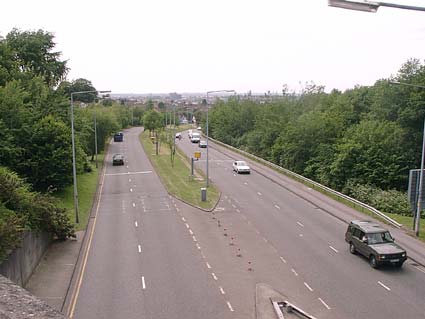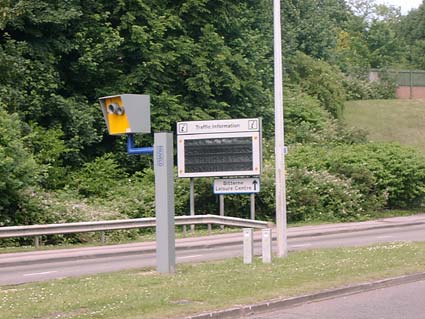However, what grieves those professional and independent researchers actively involved in determining facts that can positively be used in road user education at all levels, is that many of the Safety Camera Partnership have again selected to ignore the facts in the most recent studies issued by the Department for Transport such as:
• Exceeding the speed limit or going too fast for conditions were reported as a contributory factor in 15 per cent of all accidents. However, the factor became more significant with the severity of the accident; excessive speed was reported as contributory factor in 26 per cent of fatal accidents and these accidents accounted for 28 per cent of all fatalities (793 deaths). However, excessive speed does not necessarily involve breaking any speed limit. For example 28 mph in a busy shopping street is much more dangerous than 42 mph in a relatively empty dual carriageways with a 40 mph limit.

Always overtake with RESPONSIBILITY perhaps like the truck driver above suggests.
Additionally, Government (DfT) statistics show that
• Exceeding speed limit was attributed to 3 per cent of cars involved in accidents, while going too fast for conditions was attributed to 7 per cent. For fatal accidents these figures are 7 per cent and 10 per cent respectively.
The Driver Education Research Foundation (DERF) has been involved in recent research into the fitting of two micro-cameras in company cars which run on a five-minute loop; in the event of a crash investigators can see what the road ahead was like in the seconds before a crash, and also where the driver was looking at the same time. Perhaps these are the sort of cameras that will eventually be used in partnership with police and insurance companies?
Regrettably the main causes of vehicle crashes and deaths, as quoted by DfT are:
• Failed to look properly was the most frequently reported contributory factor and was involved in 32 per cent of all accidents. Five of the six most frequently reported contributory factors were some kind of driver or rider error or reaction. For fatal accidents the most frequently reported contributory factor was loss of control, which was involved in 35 per cent of fatal accidents. …
• … for all road classes except motorways for which failed
to judge other persons path/speed was a contributory factor in 24 per
cent of accidents. This is compared with 21 per cent for failed to look
properly.
• Following too closely was a contributory factor in 18 per cent
of accidents on motorways compared with 9 per cent for A roads and 6 per
cent for B roads.
We feel that current cameras would be better employed giving warnings. Perhaps the most effective cameras are those that identify and illustrate the vehicle registration number. Drivers are much more likely to obey a reminder that identifies them. Meanwhile more attention should be given to use of cameras which can catch drivers who follow too closely behind others.

For example although German road safety authorities have had what they call “Triple Light Cameras” since 1988, no one in the UK has even bothered to give trials to them. Because German Autobahns often do not have speed limits as we know them, they use these cameras to identify those drivers who drive consistently (that is through three cameras in sequence) closer than 1.6 seconds behind the preceding vehicle. Following too closely is a far greater cause of increased road risk. In the UK we have traditionally used the "two-second rule" as a guide, although four seconds is a far safer following distance at speeds below 30 mph and five to ten seconds for speeds up to 70 mph.
Most regrettable of all, of course, is the fact that the best way to reduce risks from losing attention when using the roads shown to be the most serious driving error that all drivers, riders and other road users make is being used less and less. This lack of any visible police presence not only fails to spot real speeding drivers, it also allows drunken drivers, those without tax, bus lane users and other dangerous driving offenders to behave as they wish..

Regrettably, until correct action is taken, here in the UK, road users will continue to kill ten other road users every day until drivers and all other road users are conditioned to understand and apply the principles of skill with responsibility..
Peter Russell
(Professor of Road Safety Education)
D. E. R. F.